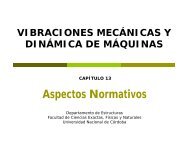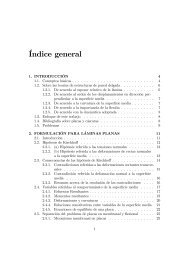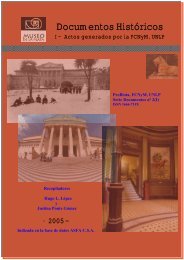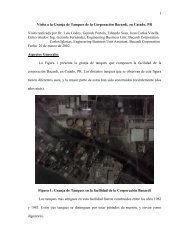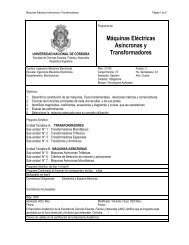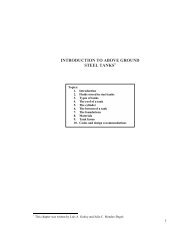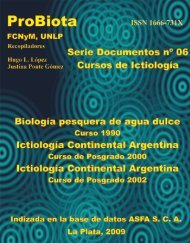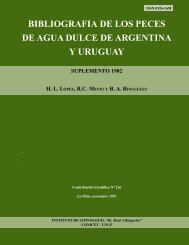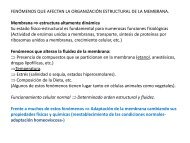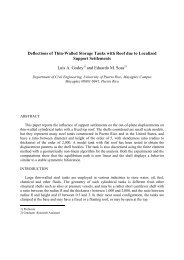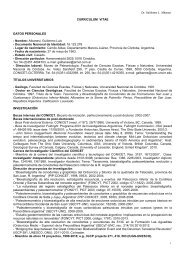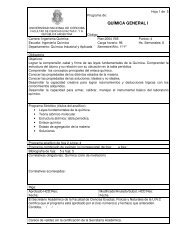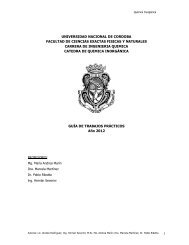Libro de resúmenes - Facultad de Ciencias Exactas, FÃsicas y ...
Libro de resúmenes - Facultad de Ciencias Exactas, FÃsicas y ...
Libro de resúmenes - Facultad de Ciencias Exactas, FÃsicas y ...
- No tags were found...
You also want an ePaper? Increase the reach of your titles
YUMPU automatically turns print PDFs into web optimized ePapers that Google loves.
I JORNADA DE DIFUSIÓN DE INVESTIGACIÓN Y EXTENSIÓN EN INGENIERÍA QUÍMICA FCEFyN – UNC“I<strong>de</strong>as y perspectivas para construir futuros distintos”5 <strong>de</strong> Mayo <strong>de</strong> 2010STUDY OF ENZYMES ADDITION ON WHEAT-SOY BREAD QUALITYPaola Roccia 1 , Pablo D. Ribotta 1,2 , Gabriela T. Pérez 1 , Alberto E. León 11Química Biológica, FCA-UNC-CONICET. Ce: proccia@agro.unc.edu.ar.2Tecnología <strong>de</strong> los Alimentos, FCEFyN-UNC-CONICET. Ce: pribotta@agro.unc.edu.arKeywords: soy flour, wheat flour, bread, enzymesThe use of soy flour to elaboration of wheat bread would serve to improve the nutritional valueand perceived health benefits of traditional pan bread. However, incorporation of high levels ofsoy protein <strong>de</strong>presses loaf volume, gives poor crumb characteristics and <strong>de</strong>creasesacceptability. The use of enzymes can be of great help in overcoming these problems. Theaim of this work was to study the addition effect of three enzymes, pentosanase (Pn), glucoseoxidase (Gox) and transglutaminase (Tg) in the characteristics of wheat-soy dough and in theimprove of bread quality. Commercial wheat flour and soy flour were provi<strong>de</strong>d by a localmilling company. The formulation utilized was wheat flour (85%), soy flour (15%), yeast (3%),NaCl (2.2%), water and enzymes (0.006% and 0.012% of Pn; 0.001% and 0.01% of Gox;0.05% and 0.3% of Tg). The ingredients were mixed and the bread dough was formed, rested,divi<strong>de</strong>d, hand-roun<strong>de</strong>d, sheeted, fermented and baked. The specific bread volume and crustcolor of breads were measured. Texture profile analysis parameters were <strong>de</strong>termined at 0, 1and 3 days of storage. The CO 2 retention capacity and extensibility measurements wereanalyzed; resistance to extension (Re), extensibility (E) and area un<strong>de</strong>r <strong>de</strong> curve (A) werecalculated. The Pn addition <strong>de</strong>veloped the greatest bread volume while the highest level of Tg<strong>de</strong>creased it respect to the control (without enzyme). The texture parameters values showedan inverse relationship with bread volume, Pn addition <strong>de</strong>creased the crumb firmness duringall the days of storage improving significantly the crumb characteristics while Tg 0.3%increased the crumb firmness. Gox levels and the lowest level of Tg <strong>de</strong>creased the firmnesscrumb at the third days indicating that these levels of enzyme retard the crumb <strong>de</strong>terioration.Only the breads with Tg addition showed a lower intensity of crust color than the control, thismay due to the interactions produced by Tg to make a few amount of free sugar available forMaillard reactions. The CO 2 retention capacity of dough showed the same ten<strong>de</strong>ncy that breadvolume for all levels of enzyme this resulted in a positive correlation, confirming that Pnimprove the bread making of wheat-soy breads and high levels of Tg to produce it <strong>de</strong>triment,while Gox did not change respect to the control. The enzymes incorporation in wheat-soydough affected the extensibility properties, Pn increased the E and <strong>de</strong>creased slightly the Re,this probably due to the action of Pn in the pentosans that produce the better water distributionin the gluten. Gox and the highest Tg levels incremented significantly the Re and <strong>de</strong>creasedthe E, these results may due to the effect of Gox and Tg in the S-S formation and/or AXcrosslinking.Resumen presentado en 13 th ICC Cereal and Bread Congress. Madrid 2008.75



